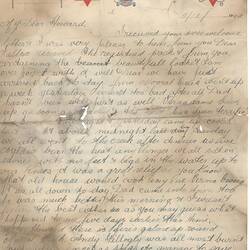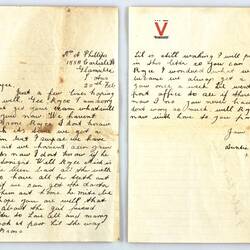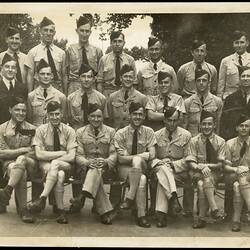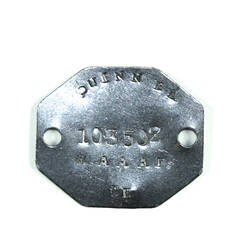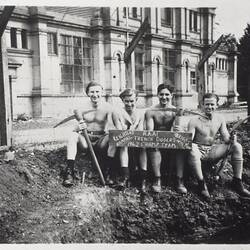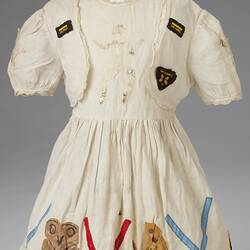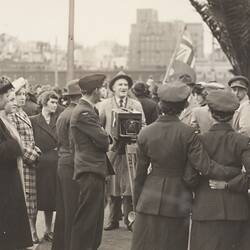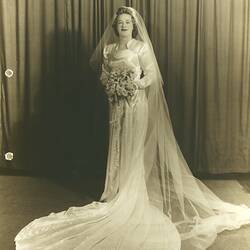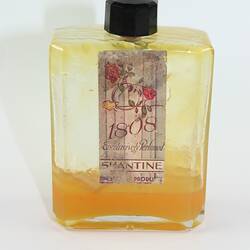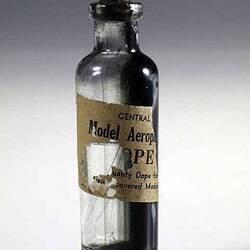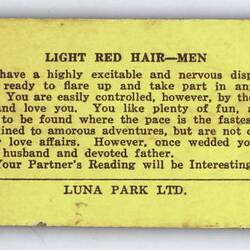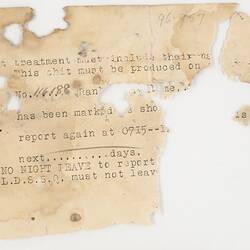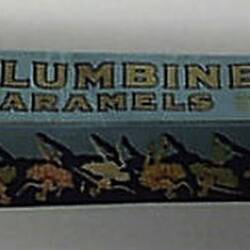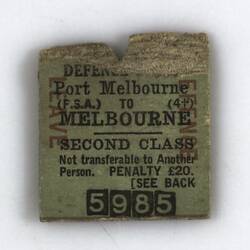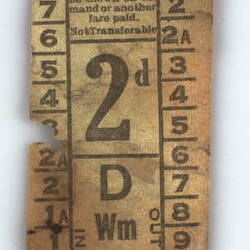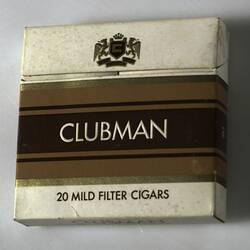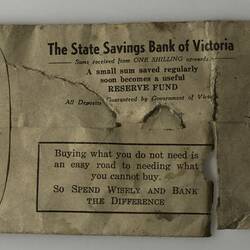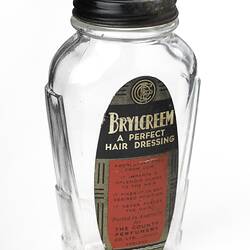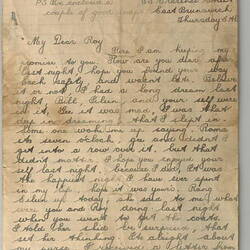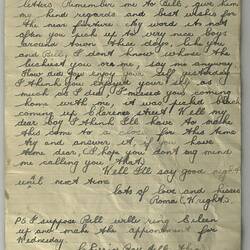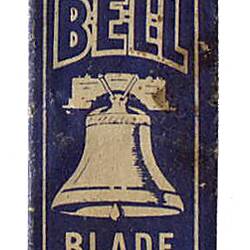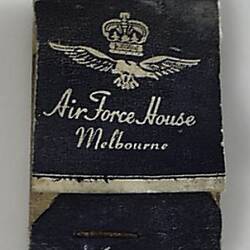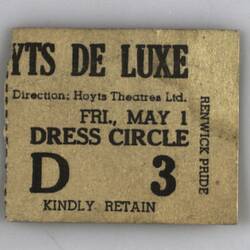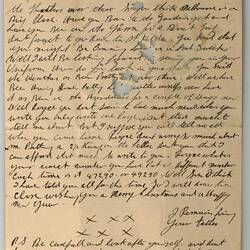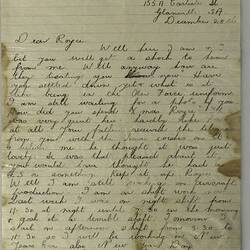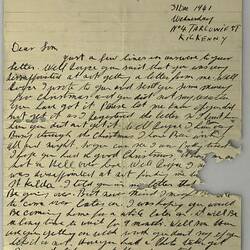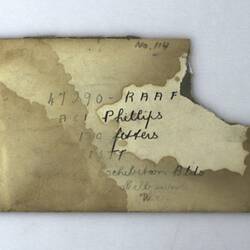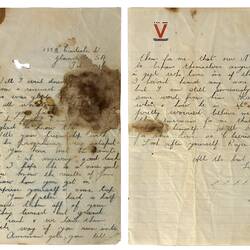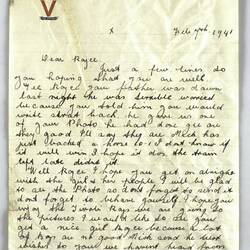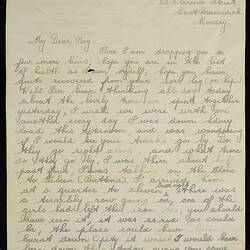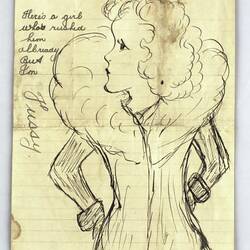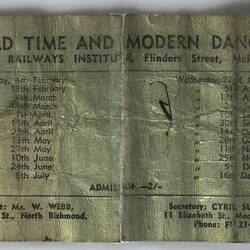Summary
Built in 1879 to host Victoria's first international exhibition, the Royal Exhibition Building (REB) has played a significant role in the political, cultural, economic and social history of Australia. The collection illustrates significant periods and uses of the Royal Exhibition Building and Carlton Gardens. The best represented events are: 1880 Melbourne International Exhibition (MIE), the 1888 Melbourne Centennial International Exhibition (MCIE), and the opening of the first federal parliament of Australia in 1901. As well as objects exhibited at the two international exhibitions, the material relating to these events includes official and souvenir guidebooks, plans, photographs, invitations, tickets and souvenirs. The Museum also maintains a REB research archive of over 6000 folders containing copies of documents, newspaper articles, photographs, fliers, and so on.
The Royal Exhibition Building's World War II story began on 23 January 1940 when 4,000 men of the 17th Brigade of the Sixth Division of the 2nd Australian Infantry Forces stayed in the building (then known simply as the Exhibition Building) overnight before marching though the city the next day.
The ongoing wartime occupation of the Exhibition Building began in October 1940, when the RAAF officially requisitioned the Building under the National Security (General) Regulations for use as a barracks and training facility. After some minor modifications and partitioning in January 1941, No.1 School of Technical Training (1 STT) was relocated from West Melbourne Technical School and occupied the Exhibition Building and Carlton Gardens under the command of Wing Commander R.G. Francis (17 March 1941 - 8 October 1945). (Later war-time photographs in the Australian War Memorial indicate that some functions of the No. 1 School of Technical Training remained in West Melbourne.) By 1942 there were over 2,000 RAAF personnel living at the Exhibition Building - mostly non-crew aircraftmen, trainers and administrators. They typically undertook training courses in local schools and technical facilities. Members of the Women's Auxiliary Air Force (WAAAF) were also stationed at the Exhibition Building.
The main hall of the Exhibition Building accommodated 2,000 personnel. The vestibule behind the organ became a shower block; the western nave was transformed from concert hall into recreation room; and construction north of the building included a kitchen, hospital, laundry block and store-room. Aerial photographs of the time, such as MM 124010, show long huts in rows enclosed by the eastern and western annexes of the Exhibition Building (now demolished).
The proximity of the Exhibition Building to the centre of Melbourne meant the site had a significant impact on the general public's experience of the war. The bustling, crowded site was also used as a venue for entertainments for servicemen and women. In 1942 the Palais Royale at the Exhibition Building hosted a ball which was free for naval, military, and air force men, with members of various women's organisations acting as hostesses; radio stars provided variety acts between dances. An on-site aquarium remained open to the public during the war.
The No.1 School of Technical Training remained at the Exhibition Building until 1945, with Flight Lieutenant B.H. Pascoe (13 October - 22 November 1945) responsible for the school in its final months at the site. After the war, RAAF occupation continued, with No.1 Personnel Depot stationed at the Exhibition Building under the command of Wing Commander R.K. Bazley (October 1945 - October 1946).
In 1981, on the 40th anniversary of the occupation of the building by the RAAF, a plaque to commemorate the event was unveiled by Air Commodore P.J. Reid, with Trust members and former members of the RAAF (documented in photos such as MM 124516).
In 1989 works to replace floorboards in the REB uncovered over 270 personal items that had been pushed into holes in the floor during World War II by personnel stationed there, including intimate letters, food and personal effects. These items were never expected or intended to survive, and offer a rare unfiltered record of a time lost to public memory. Some of the items include personal names - of servicemen, families and girlfriends. Identified names in the collection:
Horace Frederick Benporath
A.J. Burn
Harry Collins
Arthur Ronald Colley
G. A. Dodridge
Robert Drinnan
K.W. Farmer
M.D. Fox
Clarence Albert Oliver Hutchins
Howard Kellehear
Harry Leach
Douglas Lindner
John O'Sullivan
Colin Pestell
Royce (Roy) Phillips
Dorothy Lilian Quinn (later Hubbard)
Alan Reeves
Arthur Sankey
James Smith
John Robert Walter
Roma C. Wright
References:
'Royal Exhibition Building', Victorian Heritage Database Report, Hermes Number 184036.
More Information
-
Keywords
-
Authors
-
Article types

